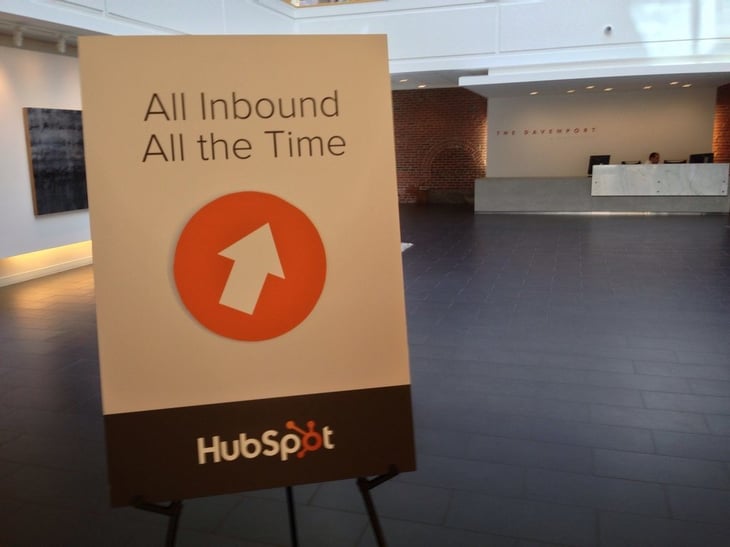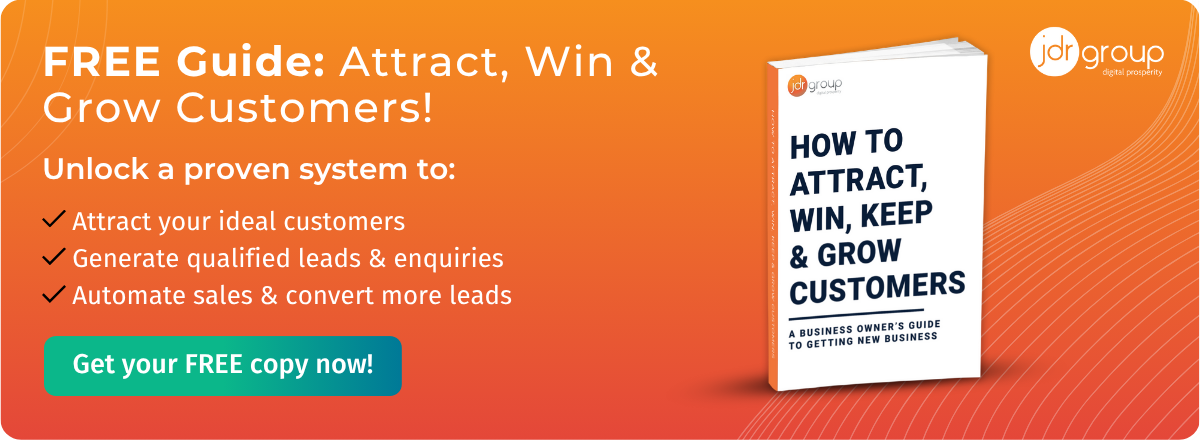'What Does Hubspot Do?' An Overview & How It Can Transform Your Sales & Marketing

Over the past 3 years, we have worked with and tested over 60 different marketing technology programs – for email marketing, website analytics, SEO, blogging, social media, CRM systems and marketing automation.
There is only one which we’ve found that does all of these things in one place, and that’s HubSpot.
We’ve used HubSpot for a couple of years now ourselves, and have become big fans of the tool and what it can do, so much so that we have become a HubSpot Partner agency.
If you are new to marketing automation or new to HubSpot, this article is to give you a brief overview of the platform.
The Inbound Marketing Methodology
HubSpot is founded on the understanding that most traditional marketing methods (such as telemarketing, direct mail, email shots and TV advertising) are working less and less effectively in the digital age in which we all live.
They are intrusive because they try and sell items people don’t usually want, and impersonal because they don’t address the customer’s specific needs and budget.
According to their own research, 86% of people (in the United States) do not watch TV adverts, while 44% of Direct Mail remains unopened (we feel this is a conservative estimate). Meanwhile more and more people are joining the TPS and having receptionists screen telemarketing calls – these are distractions and interruptions that most people want to avoid.
In place of the ‘go and preach to your customers’ mentality of traditional marketing, HubSpot advocates a number of inbound methods that set up a proposition so attractive to your customers that they will want to visit you without being prompted.
The inbound journey is summed up by four simple stages representing a relationship between you and your customer.
1) Attract: in this phase meaningful content and brand messages are created and published, which attracts strangers to your website. What does this phase look like? You’ll be creating content, recording videos, sending out emails, writing blogs – anything to get your brand and message out there where your market can find it.
2) Convert: In this ‘courtship’ phase, the prospect is persuaded to get in touch, and then to sign up as a committed customer. Your tool here is written website content, keyword-specific landing pages and powerful calls to action CTAs.
3) Close: By building a relationship, and educating your prospects with your content and using intelligence from your CRM system to know when to get in touch, your prospects are convinced slowly but surely to become a customer.
4) Delight: The customer is so delighted by your work that they return for order after order AND tell all their friends how great you are. Keep your customer relationship hot with special personalised promotions, a nurturing programme and a well-planned email marketing and social media strategy.
So, What Does HubSpot Do?
With this inbound philosophy in mind, HubSpot helps businesses manage the following core marketing functions. You can do all of these activities from within HubSpot.
Email marketing
HubSpot’s email marketing suite is solidly grounded in lead generation, so unsurprisingly it has an impressive array of customisation options. HubSpot lets you send highly targeted emails with integrated analytics to allow you to organically grow your list and target them with smart content. Note: HubSpot’s email marketing tool is not intended for use with purchased ‘cold’ lists. Rather it is for nurturing leads who have already made contact through your website…
Websites
To merely talk about websites in this day and age is a misleading. Your website may still be the hub of your online presence, but it is part of a complex funnel of apps, blogs, micro-sites, landing pages, sub domains and social media platforms. These functions can be difficult to integrate on a conventional hosting platform, but HubSpot does it seamlessly. Each HubSpot designed website is completely personalised and mobile friendly.
Organic search marketing / SEO
There are plenty of standalone SEO platforms or plug-ins available, but very few that are integrated and completely native to your website. SEO is part of HubSpot’s very fabric. Start typing out content and HubSpot gives you on the spot advice about how to optimise the text for the web. It tracks your rankings in real time, gives advice on keywords, conducts research on competitors. However deep you want to go into SEO, HubSpot makes the whole process fun and easy.
Marketing Automation
HubSpot does more than merely log customer interactions. It provides a sales-focused workflow platform that maps a prospect’s journey through the four stages mentioned above. The key to success is to define clear business goals from your marketing database, and then to segment your list into distinct buyer personas each with its own set of objectives. Using HubSpot’s intuitive suite of workflow tools, the customer journey can be marked out in progressive steps, with clearly defined trigger points between them.
Social Media Marketing
Social media can be so time consuming and hit-and-miss that many businesses doubt whether it offers a worthwhile ROI. Not so with HubSpot’s social tools, which cut straight to the chase and allow you to focus on what really matters in social media, and skip out all the fluff. HubSpot’s social media app is tied into a contact database that allows you to measure the impact of all your social content.
Blogging
Recognised as the most powerful inbound marketing tool, correct blogging is a crucial part of making an impact with your target market. HubSpot makes blogging even more effective by planning your output around conversion and results. As with the entire platform, HubSpot’s blog suite is logical, intuitive and results-oriented.
CRM
In 2014 HubSpot launched a free CRM system which integrates seamlessly to the marketing tools and allows your sales team to make, record and schedule calls, emails and meetings using the intelligence gathered from HuSpot’s analytics to be timely and personalised.
Why it works - and how it can help you succeed
The inbound alternative is a softer approach to marketing, but one that nevertheless pulls in far more leads than its traditional rivals. What is more, the quality of the leads you get are higher, making them more likely to convert and to stay with your brand.
Why HubSpot?
We recently published a post called 12 Online Marketing Software Programs You Can Replace With HubSpot – there are many software programs that provide these features individually, but only one that has everything in one place which means:
- You save time – no more logging in to several different marketing programs
- Reporting and analysis – because everything is interconnected you are able to track everything in one place and produce great looking reports and help you analyse results
- You have a ‘command and control centre’ for your marketing – that puts you firmly in control
There are other marketing automation systems available, but HubSpot is often the best fit for small and medium sized businesses that don’t have large IT teams and big marketing departments. It’s also the best fit for any business wanting to follow the inbound marketing methodology as unlike rivals like Pardot, Marketo or Eloqua, HubSpot is the only marketing platform purpose-built for inbound marketing.
If you’d like to know more, you can request a FREE demo – one of our team will happily guide you round the marketing program and show you how these features work and how you can use it in your business. It’s free, and you can request it here: FREE HubSpot Demo.
JDR Group are UK HubSpot Partners, and can provide HubSpot CRM Implementation and HubSpot Sales Enablement services.
Find out more here: HubSpot Partners


